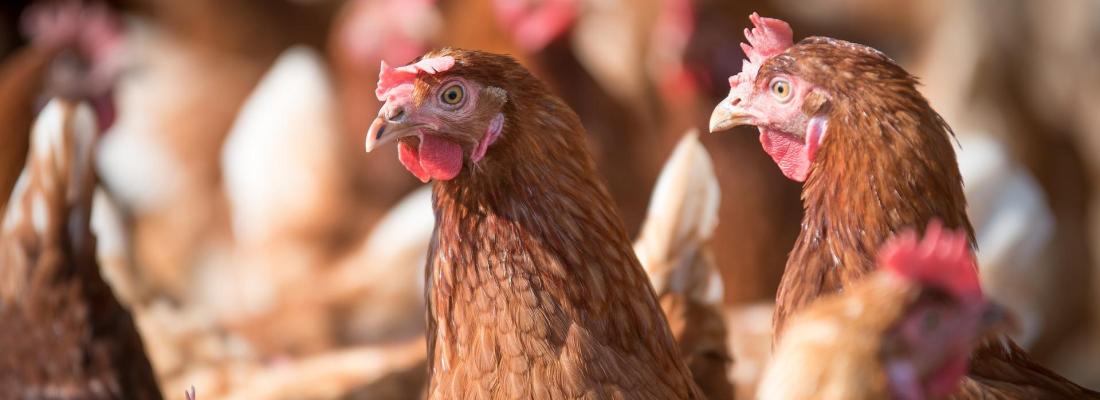Agroecology Reading time 3 min
Discovery of heritable resilience indicators in laying hens
Published on 20 April 2022

Farming practices are changing rapidly. Caged farming is coming to an end in the EU (a 2027 goal); access to the outdoors is increasingly common; and drug-based treatments are ever more sparsely deployed. These shifts aim to improve farm animal welfare by implementing the One Health approach. Concretely, this means animals will be reared under less controlled conditions and experience more environmental unpredictability, such as temperature fluctuations and exposure to pathogens. Efforts must thus be made to breed more resilient animals that are better able to cope with such disturbances. However, resilience is not a point of focus in breeding programmes for laying hens.
Laying data from 60,000 hens
A hen’s laying rate is quantified daily over her lifetime. If her weekly egg-laying rate drops, it is often a sign that she is experiencing an environmental disturbance. Researchers analysed 58 weeks of laying data obtained from 60,000 hens of two pure breeds (White Leghorn and Rhode Island) being used in breeding programmes. They also looked at data from 17,000 crossbred hens produced from these two pure breeds, focusing on animals used on commercial farms. First, the researchers estimated each hen’s expected laying rate in the absence of disturbance, which is the mean number of eggs laid per week per hen in a given flock. Second, they calculated the difference between actual and expected egg-laying rates for all the individuals in the study.
Genetics shapes three indicators of resilience
A statistical analysis of the above differences revealed three indicators of resilience.
- Individuals varied in their sensitivity to disturbances (i.e., skewness). Less resilient hens more frequently displayed drops in egg production, resulting in asymmetrical differences between actual and expected egg laying.
- Individuals also varied in their recovery speed (i.e., autocorrelation). Less resilient hens were slower to return to normal egg-laying rates following a disturbance. Consequently, for these hens, differences in actual versus expected egg laying were similar between consecutive weeks, resulting in a higher degree of autocorrelation. In contrast, hens that recovered faster displayed a lower degree of autocorrelation.
- Individuals varied in their average degree of difference from the expected egg-laying pattern (i.e., variance). This general indicator conveys both a hen’s sensitivity to disturbance and recovery speed. More resilient hens displayed less-frequent, lower-magnitude deviations from expected laying rates.
In summary, a highly resilient hen should display near-zero skew, a weak degree of autocorrelation, and a low level of variance. Furthermore, the researchers discovered that around 10% of the variability among hens in these three indicators was genetic and, therefore, heritable. These findings highlight strategies for improving laying hen resilience as part of breeding programmes. Such efforts could indirectly boost egg production by limiting declines in egg-laying rates.
Overall, both pure breeds demonstrated considerable resilience, which could be further improved via targeted breed-specific selection. However, the study also found that improved resilience in purebred hens would only partially translate into improved resilience in crossbred hens, a crucial discovery since it is crossbred hens that serve as the basis for commercial egg production. This hurdle can be overcome by taking steps to improve resilience in breeding programmes for both crossbred and purebred hens.
This pioneering research has shown that a complex trait—resilience—can be quantified via three simple indicators. Its findings can help guide efforts to breed laying hens that are better equipped to face climate change, cage-free rearing conditions, and farming practices aimed at boosting animal welfare.
Reference
Nicolas Bedere, Tom V.L. Berghof, Katrijn Peeters, Marie-Helene Pinard-Van der Laan, Jeroen Visscher, Ingrid David, Han A. Mulder, Using egg production longitudinal recording to study the genetic background of resilience in purebred and crossbred laying hens, Genetics Selection Evolution 54, 26 (2022). https://doi.org/10.1186/s12711-022-00716-8
